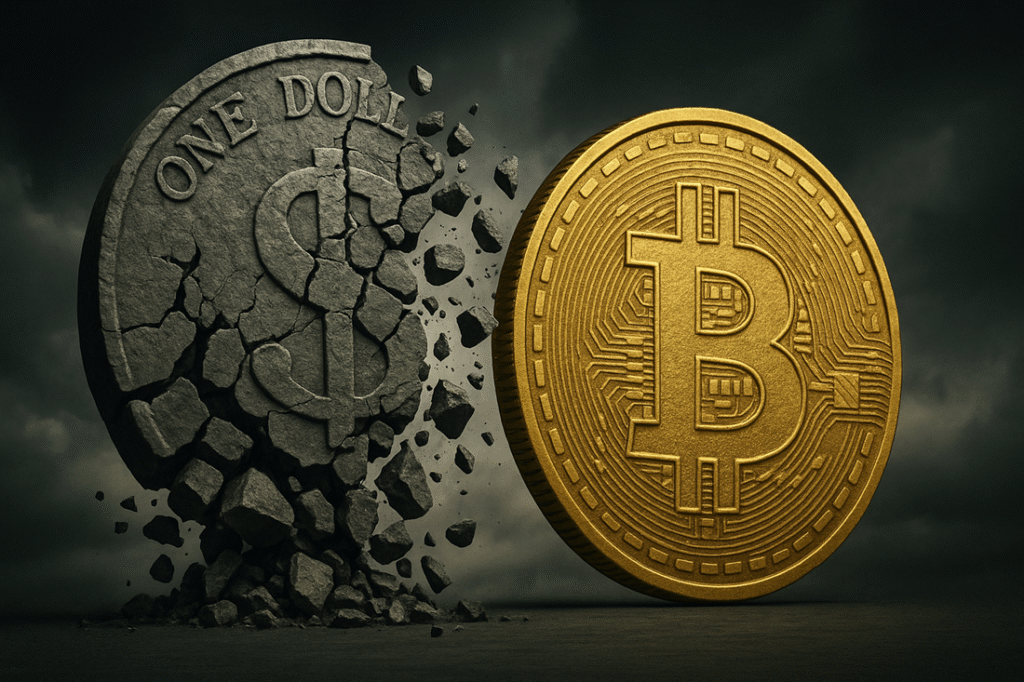In an ever-evolving financial landscape, the discourse isn’t just about markets and investments anymore. It’s about understanding the tectonic shifts in the global monetary system. As traditional financial structures face unprecedented challenges, Bitcoin emerges as a pivotal player, capturing the attention of economists and investors worldwide. This guide delves into the intriguing statements made by Federal Reserve Chair Jerome Powell, as interpreted by visionary Bitcoin advocate Jack Mallers, offering a fresh perspective on the intersection of traditional finance and cryptocurrency.
The Irresistible Rise of Bitcoin: A Response to Shifting Monetary Policies
Emerging Challenges in Global Monetary Policies
Federal Reserve Chair Jerome Powell’s recent comments have sparked a significant debate among financial experts. During the 75th anniversary of the Federal Reserve’s International Finance Division, Powell acknowledged a crucial transformation in monetary policies since the 1970s. He emphasized that “the end of the Bretton Woods era fundamentally changed the conduct of monetary policy.” This revelation has reignited discussions about the stability and future of fiat currencies.
Jack Mallers’ Assertion: Bitcoin as the Rational Response
Jack Mallers, CEO of Strike, interpreted Powell’s remarks as a tacit admission of systemic fragility in the current monetary system. According to Mallers, the departure from the gold standard in the 1970s represented not just a policy shift but a fundamental redefinition of value. “When we divorced ourselves from the gold standard, we also divorced ourselves from the physical constraints of nature,” Mallers argued, highlighting the inherent volatility introduced by this decoupling.
The Physics of Monetary Systems: Gold vs. Bitcoin
Mallers draws an intriguing parallel between the immutable laws of physics and monetary value. Gold, once the backbone of economic stability, is governed by these natural laws. Bitcoin, Mallers contends, shares this immutable quality through its proof-of-work system. “Proof-of-work ties us to reality,” he asserts, positioning Bitcoin as a modern, digital equivalent to gold’s timeless value.
The Federal Reserve’s Complex Role in a Post-Bretton Woods Era
Powell’s remarks signal an acknowledgment of the complexities introduced when monetary policy is untethered from physical constraints. Today, the Federal Reserve’s role extends beyond maintaining price stability. It involves navigating a landscape rife with political influence, leverage, and volatility management. Mallers believes this complexity marks a seismic shift in the Fed’s responsibilities, one that could pave the way for Bitcoin’s ascendance as a stable alternative.
Implications of Monetary Policy Shifts
Mallers foresees potential changes in core Fed mandates, such as adjusting the inflation target. “If Powell comes out and says the inflation target is 4%, not 2%—boom,” Mallers predicts, indicating a preparedness for significant economic transitions. The anticipation of these changes suggests that stakeholders should remain vigilant and agile in adapting to new financial realities.
Bitcoin: The Exit Strategy in an Uncertain Economic Future
Amidst predictions of a looming monetary regime change, Mallers positions Bitcoin as the ultimate hedge against traditional financial instability. He argues that Bitcoin offers a unique steadfastness, governed by mathematical certainty rather than political whims. As traditional currencies face potential devaluation, Bitcoin’s decentralized nature and finite supply make it an attractive refuge for investors seeking stability.
FAQs About Bitcoin and Financial Market Shifts
Is Bitcoin poised to replace traditional currencies?
While Bitcoin offers unique advantages, such as decentralization and scarcity, its complete replacement of traditional currencies is complex. It is more likely to serve as a complementary reserve asset, offering a hedge against fiat currency devaluation.
How does Bitcoin’s proof-of-work system contribute to its stability?
Bitcoin’s proof-of-work mechanism ensures network security and transaction validation through computational effort. This process makes Bitcoin resistant to manipulation and enhances its reliability as a store of value.
What are the risks associated with investing in Bitcoin amidst changing monetary policies?
Investing in Bitcoin involves volatility and regulatory uncertainties. Investors should conduct thorough market analysis, remain informed about policy changes, and consider their risk tolerance before committing to a Bitcoin investment.
How are global geopolitical shifts impacting Bitcoin adoption?
As geopolitical tensions rise, Bitcoin’s appeal grows as a borderless, censorship-resistant asset. Its adoption is increasing among individuals and institutions seeking protection against economic instability and restrictive monetary policies.
In conclusion, the evolving dialogue around Bitcoin and its role in a potential new world monetary order continues to gain momentum. Jack Mallers’ interpretation of Powell’s remarks offers a compelling narrative that invites both investors and policymakers to reconsider their strategies in light of an increasingly digital financial landscape. As Bitcoin stands at the forefront of this transformation, its future remains both promising and pivotal.

